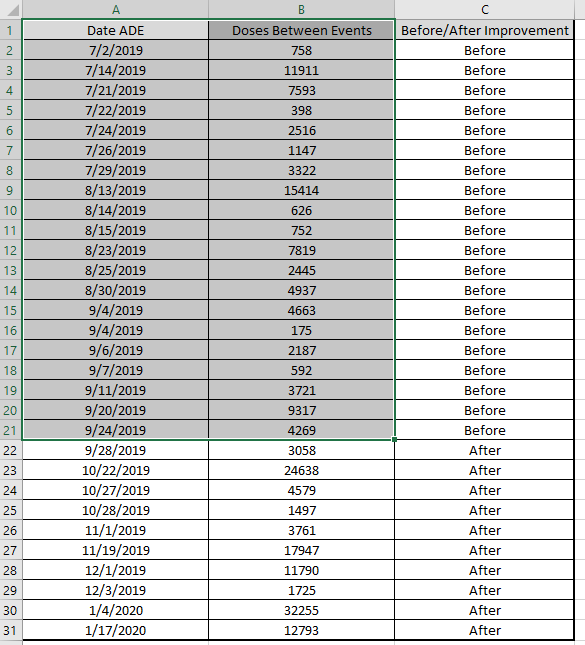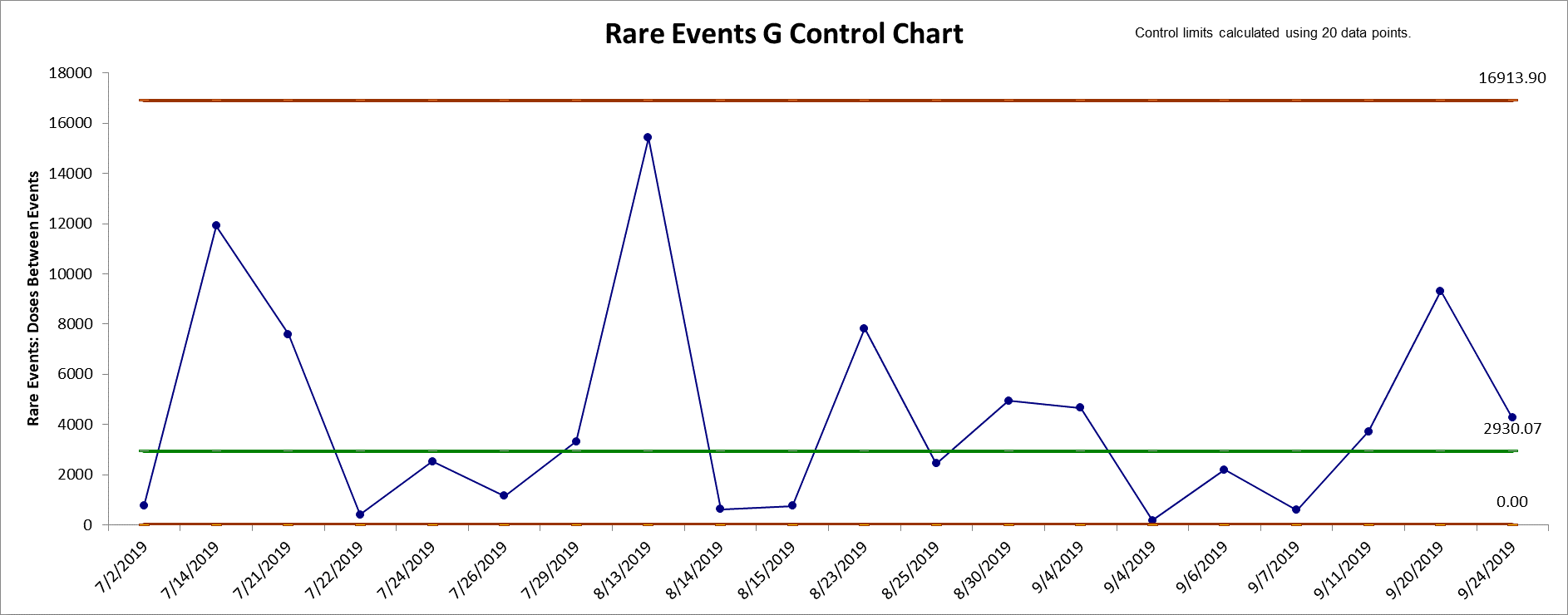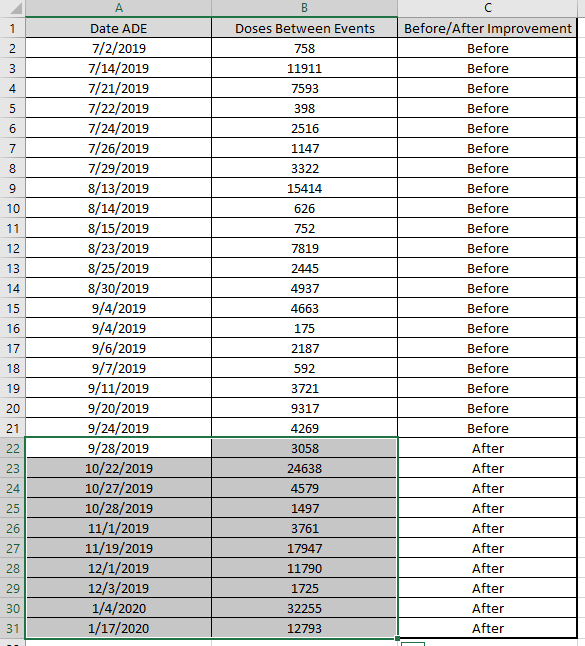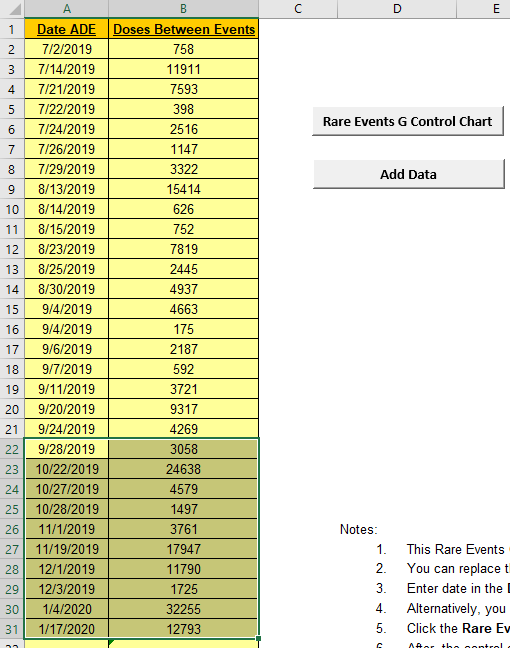





The G chart (or Geometric chart) is an alternative to a standard attribute chart when the adverse
event of interest is rare and discrete opportunities between events are counted (e.g., number of
units or days between).
The calculation of control limits is an approximation based on the
geometric distribution. An "out-of-control" signal above the UCL is
desirable, indicating a significant increase in units/opportunities
or days between adverse rare events. See Provost and Murray, 2011. The Provost and Murray book is popular in health care, so SigmaXL uses the control limit calculations as given in the book:
 For more accurate probability-based limits, see the Rare Events Prob
G Control Chart.
For more accurate probability-based limits, see the Rare Events Prob
G Control Chart.
1. This Rare Events G Control Chart template should be used with
days or units/opportunities between (typically adverse) rare events.
2. You can replace the Date/Time and Days
Between column headings with any headings that you wish.
3. Enter date in the Date column. Days between are
automatically calculated and entered into Days Between
column. Cell B2 is not used in this case.
4. Alternatively, you may manually enter data in Days/Units
Between. Note, this will overwrite the cell formula.
5. Click the Rare Events G Control Chart button to
create a control chart. This will overwrite any existing control
chart.
6. After the control chart has been created and additional new
Date or Days/Units Between data
entered, click the Add Data button to add the data
to the existing chart.
7. An "out-of-control" signal above the UCL is desirable, indicating
a significant increase in days or units/opportunities between
adverse rare events.
8. The calculation of control limits is based on the geometric
distribution. The center line is the theoretical median for a
geometric distribution = 0.693 * mean.
9. Reference: Provost L, Murray S., The Health Care Data Guide:
Learning from Data for Improvement. San Francisco: Jossey-Bass,
2011, pp. 228-229.
Our CTO and Co-Founder, John Noguera, regularly hosts free Web Demos featuring SigmaXL and DiscoverSim
Click here to view some now!
Phone: 1.888.SigmaXL (744.6295)
Support: Support@SigmaXL.com
Sales: Sales@SigmaXL.com
Information: Information@SigmaXL.com